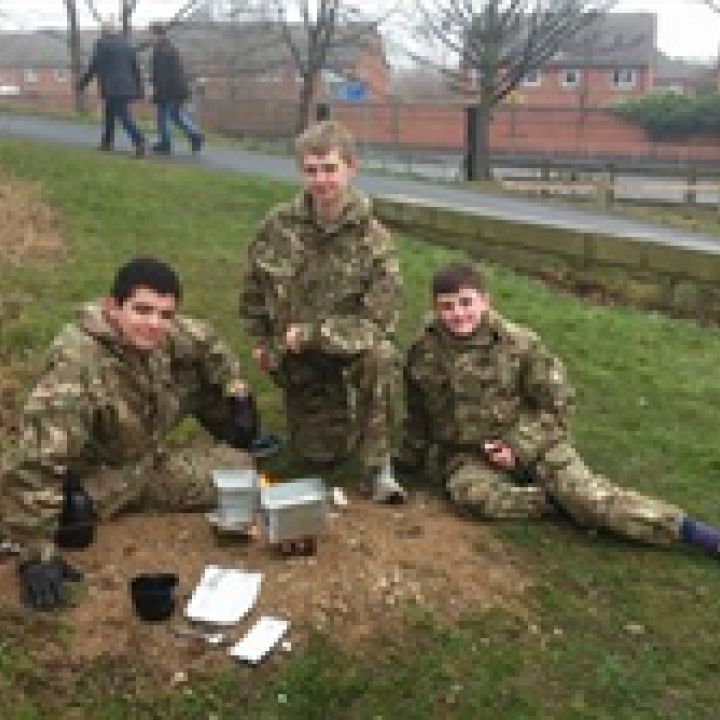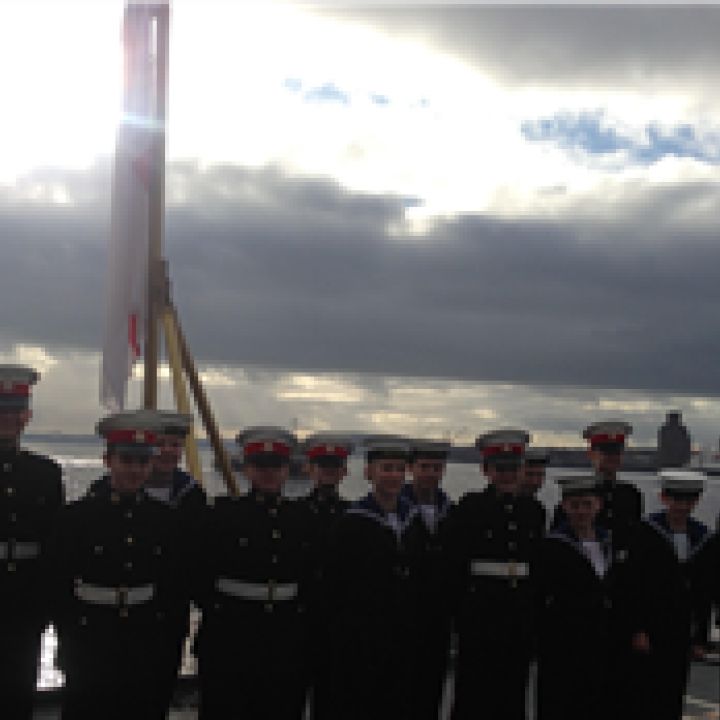Thursday 11th December 2014 saw members of Preston Sea Cadets serve as guard of honour at a commemorative football match between a group of English and German school children at Bamber Bridge football club. The football match was organised to commemorate the Christmas football match between English and German troops around Christmas day 2014.
The Christmas truce was a series of widespread but unofficial ceasefires along the Western Front around Christmas 1914. In the week leading up to the holiday, British and German soldiers crossed trenches to exchange seasonal greetings and talk. In areas, men from both sides ventured into no mans land on Christmas Eve and Christmas Day to mingle and exchange food and souvenirs. There were joint burial ceremonies and prisoner swaps, while several meetings ended in carol-singing. Men played games of Football with one another, giving one of the most enduring images of the truce. However, the peaceful behaviour was not ubiquitous; fighting continued in some sectors, while in others the sides settled on little more than arrangements to recover bodies.
Spectators where asked to make a donation of around £1.00 each on the gates, this entrance fee was in aid of the Royal British Legion which along with money raised during November will help serving and former members of the Armed Forces.
Cadets assisted at the main gate and handed out programmes with the flags of either Great Britain or Germany on the rear. Spectators were asked to support whichever country was on the rear of their programmes. Before the game started cadets formed an Honour Guard at the mouth of the tunnel whilst players from both teams ran onto the pitch and during a two minute silence.








